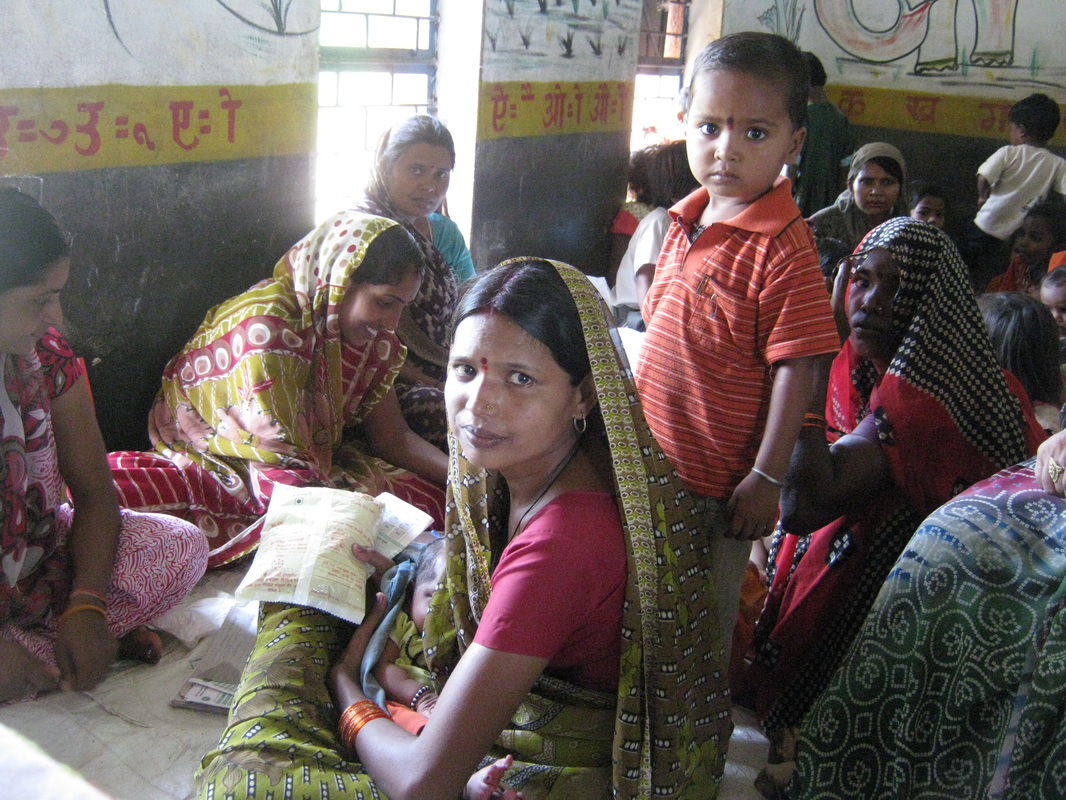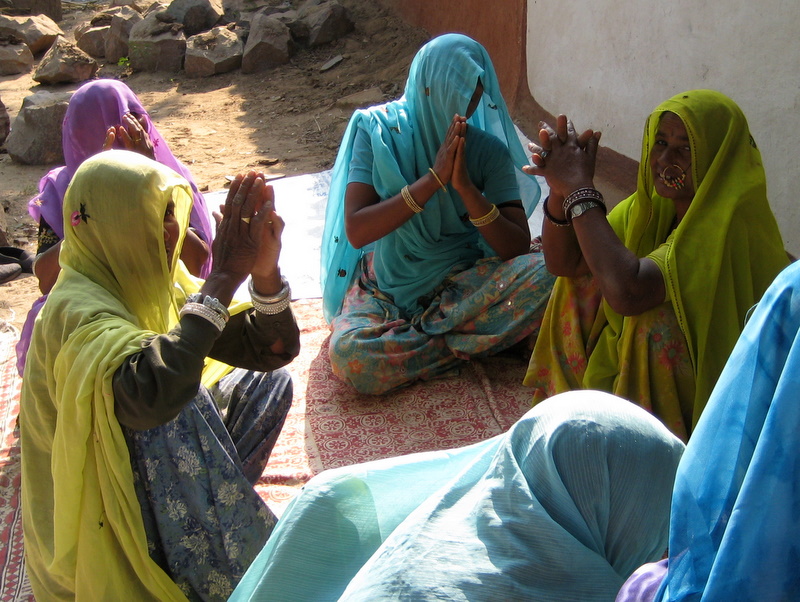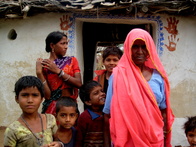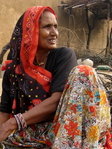Opinion
MATERNAL HEALTH CARE IN INDIA: WHICH WAY IS IT HEADED?
Author: Dr. Abhijit Das
April is an important month for public health, more so for India. On the 7th of April 1948, the World Health Organisation was founded and the day is remembered as the World Health Day. On the 12th of April 2005, the National Rural Health Mission was launched promising to energise a moribund public health system and in the eight years since, a lot has been delivered. For the last few years the 11th of April, the birth anniversary of Kasturba Gandhi, has been designated as the National Safe Motherhood Day. April is thus an opportune month to review the status of maternal health in our country.
India was and continues to be the country where the largest number of women die due to pregnancy associated causes. Nearly one in four of all maternal deaths continue to occur here. It is disproportionate to India’s status as a middle-income country and India’s share of world population (which is a little less than one sixth). However to give credit where it is due, India’s public health care system has received a fresh lease of life through the National Rural Health Mission (NRHM, 2005-2012), and a large part of the NRHM was focused on the JSY (Janani Suraksha Yojana), a conditional cash transfer intended to motivate women to attend hospitals during labour. Now, seven years later, is a good time to reflect on whether the NRHM and the JSY approach managed to get more women into hospitals, and as a result bring down maternal mortality.
The first question that arises is of resources: when our economic growth was zooming at 9%, the overall investment in public health was slow. The promise of 2 to 3% of GDP which the first UPA government had made in 2004 and has kept repeating never materialised, and is not even a target for the 12th Five Year Plan period. The question that this situation raises is how can we claim that NRHM investments are working when the investments are nowhere close to what was expected? Now that the growth rates are coming down, the public health sector is faced with more cuts. Added to this is the vexing problem of monumental corruption being unearthed in many states, as in Uttar Pradesh. Let us examine the status of maternal health in UP to understand the situation.
Uttar Pradesh is an appropriate place to examine improvements in the status of Maternal Health particularly so because the rates of maternal mortality were so high to start with. In the latter part of the last millennium – about 15 years ago nearly 700 women died for every 100,000 women who had a live birth. Since about 50 lakh women delivered in UP at that time, it was estimated that about 35,000 women would lose their lives due to causes related to pregnancy and childbirth. This meant one in 15 maternal deaths worldwide took place in UP alone! Today the maternal mortality ratio in UP has come down to 345 (maternal mortality ratio is the number of maternal deaths per 100,000 live births) and this means that even though 60 lakh births are taking place, the estimated number of mothers dying has come down to about 21,000; a drastic reduction indeed (Annual Health Survey (AHS) 2010 -11). Similar declines have taken place in infant and neonatal deaths and far fewer lives are lost.
Since NRHM was launched, UP received additional funds of over rupees 6,000 crores, half of which were for Reproductive and Child Health related activities. Over half of the 3,000 crores were meant for improving maternal health outcomes. According to records, over the last eight years more than one crore women in UP have received a cash incentive under the Janani Suraksha Yojana (JSY) and the rates of institutional delivery have doubled from about 22% in 2005 to 45% in 2010 (ibid). Overall the picture that emerges seems to be ‘rosy’, and the NRHM methodology of promoting institutional delivery through the JSY and the ASHA appear to be bearing results.
But as we all know India is a complex country with huge variations. And if inclusive growth is the mantra of our development process it is instructive to look at these variations. Take for example maternal mortality ratio where the average for UP is 345 according to the Annual Health Survey 2011; what are the variations we can see within the state? Faizabad has a MMR of 451, which is more than twice the Indian average, and the MMR in another three of the 18 administrative divisions of UP is over 400 which can be considered extremely high.
Less than 30% of women in UP had received Antenatal care 3 or more, while the NRHM makes provisions for at least 4 such visits. The figures get worse with less than 1 % women in Shravasti having full ANC check up and only 6% having their blood pressure measured. With Institutional delivery being the most important component of NRHM and often the measure of its success, it is interesting to review the status across different districts in UP. In four districts the rate of institutional delivery is still around 20%. Clearly the inputs that NRHM promised the women of Uttar Pradesh have not yet reached many of the women across the state.
Similarly when we examine the infant mortality rate (IMR or death among children before the first year) or the neonatal mortality rate (NMR or death among children before 28 days) the situation appears ever more worrisome. A global comparison shows that in districts like Shravasti and Balrampur the figures are similar to or worse than the Central African Republic or Democratic Republic of Congo or Somalia. Overall the infant mortality data in UP continues to be like that of the African region. The highest rates of neonatal mortality for countries in the Sub Saharan Africa region was 52 for Somalia whereas in UP the average is 50 and 15 districts have a NMR of 60 or more (all African data are from World Heath Statistics 2012). While it can be argued that we have better measures and the figures of Somalia or Central African Republic are rough estimates because of the war-like situations there, it is hardly comforting to be in that company.
Taking this analysis forward it is worthwhile to look at the distribution of inputs that is being provided in terms of services for mothers and infants of Uttar Pradesh. Mention has already been made of the NRHM provision of JSY to promote institutional delivery, but there are other supplementary measures as well. The Village Health and Nutrition Day (VHND) is expected to provide preventive Maternal and Child Health services close to the home and the mechanisms like referral transport, Emergency Obstetric Care, Sick Newborn Care Units are supposed to manage emergencies.
The Annual Health Survey (2010- 11) provides some idea about the immunisation status of children and of antenatal care for women, services meant to be provided through the VHND mechanism. Surprisingly, despite unending rounds of pulse polio, less than 60% percent of all babies who were between one and two years of age had received even 3 doses of polio. In Agra and Mathura this figure was less than 40%. Less than half the children between 1 and 2 years of age were fully immunised and this was as less than one fifth in districts like Bahraich, Badaun and Etah. Over one third of children in the districts of Shravasthi and Sonbhadra had not received any immunisation.
The situation in Uttar Pradesh is not unique but shared in many ways by states like Madhya Pradesh, Rajasthan, Bihar and others where the aggregate situation has improved but the situation in many districts continues to be very poor. As NRHM moves ahead and morphs itself into National Health Mission (NHM) or Universal Health Cover (UHC) it must incorporate the lessons of the last few years.
Unless these changes are brought about rapidly not only will the slogan of inclusive growth sound hollow, but the situation of large parts of India may not only rival Sub Saharan Africa in health indicators but also in terms of civil unrest and military strife.
Author: Dr. Abhijit Das
April is an important month for public health, more so for India. On the 7th of April 1948, the World Health Organisation was founded and the day is remembered as the World Health Day. On the 12th of April 2005, the National Rural Health Mission was launched promising to energise a moribund public health system and in the eight years since, a lot has been delivered. For the last few years the 11th of April, the birth anniversary of Kasturba Gandhi, has been designated as the National Safe Motherhood Day. April is thus an opportune month to review the status of maternal health in our country.
India was and continues to be the country where the largest number of women die due to pregnancy associated causes. Nearly one in four of all maternal deaths continue to occur here. It is disproportionate to India’s status as a middle-income country and India’s share of world population (which is a little less than one sixth). However to give credit where it is due, India’s public health care system has received a fresh lease of life through the National Rural Health Mission (NRHM, 2005-2012), and a large part of the NRHM was focused on the JSY (Janani Suraksha Yojana), a conditional cash transfer intended to motivate women to attend hospitals during labour. Now, seven years later, is a good time to reflect on whether the NRHM and the JSY approach managed to get more women into hospitals, and as a result bring down maternal mortality.
The first question that arises is of resources: when our economic growth was zooming at 9%, the overall investment in public health was slow. The promise of 2 to 3% of GDP which the first UPA government had made in 2004 and has kept repeating never materialised, and is not even a target for the 12th Five Year Plan period. The question that this situation raises is how can we claim that NRHM investments are working when the investments are nowhere close to what was expected? Now that the growth rates are coming down, the public health sector is faced with more cuts. Added to this is the vexing problem of monumental corruption being unearthed in many states, as in Uttar Pradesh. Let us examine the status of maternal health in UP to understand the situation.
Uttar Pradesh is an appropriate place to examine improvements in the status of Maternal Health particularly so because the rates of maternal mortality were so high to start with. In the latter part of the last millennium – about 15 years ago nearly 700 women died for every 100,000 women who had a live birth. Since about 50 lakh women delivered in UP at that time, it was estimated that about 35,000 women would lose their lives due to causes related to pregnancy and childbirth. This meant one in 15 maternal deaths worldwide took place in UP alone! Today the maternal mortality ratio in UP has come down to 345 (maternal mortality ratio is the number of maternal deaths per 100,000 live births) and this means that even though 60 lakh births are taking place, the estimated number of mothers dying has come down to about 21,000; a drastic reduction indeed (Annual Health Survey (AHS) 2010 -11). Similar declines have taken place in infant and neonatal deaths and far fewer lives are lost.
Since NRHM was launched, UP received additional funds of over rupees 6,000 crores, half of which were for Reproductive and Child Health related activities. Over half of the 3,000 crores were meant for improving maternal health outcomes. According to records, over the last eight years more than one crore women in UP have received a cash incentive under the Janani Suraksha Yojana (JSY) and the rates of institutional delivery have doubled from about 22% in 2005 to 45% in 2010 (ibid). Overall the picture that emerges seems to be ‘rosy’, and the NRHM methodology of promoting institutional delivery through the JSY and the ASHA appear to be bearing results.
But as we all know India is a complex country with huge variations. And if inclusive growth is the mantra of our development process it is instructive to look at these variations. Take for example maternal mortality ratio where the average for UP is 345 according to the Annual Health Survey 2011; what are the variations we can see within the state? Faizabad has a MMR of 451, which is more than twice the Indian average, and the MMR in another three of the 18 administrative divisions of UP is over 400 which can be considered extremely high.
Less than 30% of women in UP had received Antenatal care 3 or more, while the NRHM makes provisions for at least 4 such visits. The figures get worse with less than 1 % women in Shravasti having full ANC check up and only 6% having their blood pressure measured. With Institutional delivery being the most important component of NRHM and often the measure of its success, it is interesting to review the status across different districts in UP. In four districts the rate of institutional delivery is still around 20%. Clearly the inputs that NRHM promised the women of Uttar Pradesh have not yet reached many of the women across the state.
Similarly when we examine the infant mortality rate (IMR or death among children before the first year) or the neonatal mortality rate (NMR or death among children before 28 days) the situation appears ever more worrisome. A global comparison shows that in districts like Shravasti and Balrampur the figures are similar to or worse than the Central African Republic or Democratic Republic of Congo or Somalia. Overall the infant mortality data in UP continues to be like that of the African region. The highest rates of neonatal mortality for countries in the Sub Saharan Africa region was 52 for Somalia whereas in UP the average is 50 and 15 districts have a NMR of 60 or more (all African data are from World Heath Statistics 2012). While it can be argued that we have better measures and the figures of Somalia or Central African Republic are rough estimates because of the war-like situations there, it is hardly comforting to be in that company.
Taking this analysis forward it is worthwhile to look at the distribution of inputs that is being provided in terms of services for mothers and infants of Uttar Pradesh. Mention has already been made of the NRHM provision of JSY to promote institutional delivery, but there are other supplementary measures as well. The Village Health and Nutrition Day (VHND) is expected to provide preventive Maternal and Child Health services close to the home and the mechanisms like referral transport, Emergency Obstetric Care, Sick Newborn Care Units are supposed to manage emergencies.
The Annual Health Survey (2010- 11) provides some idea about the immunisation status of children and of antenatal care for women, services meant to be provided through the VHND mechanism. Surprisingly, despite unending rounds of pulse polio, less than 60% percent of all babies who were between one and two years of age had received even 3 doses of polio. In Agra and Mathura this figure was less than 40%. Less than half the children between 1 and 2 years of age were fully immunised and this was as less than one fifth in districts like Bahraich, Badaun and Etah. Over one third of children in the districts of Shravasthi and Sonbhadra had not received any immunisation.
The situation in Uttar Pradesh is not unique but shared in many ways by states like Madhya Pradesh, Rajasthan, Bihar and others where the aggregate situation has improved but the situation in many districts continues to be very poor. As NRHM moves ahead and morphs itself into National Health Mission (NHM) or Universal Health Cover (UHC) it must incorporate the lessons of the last few years.
- First the overwhelming emphasis on institutional delivery has to be stopped, and the focus shifted to safety. Women must be assured of safety wherever they are able to delivery- at home or at safe institutions. Mobile technology along with the spreading network of roads must be made to ensure that the emergency cases – women or sick children are able to reach the appropriate facility quickly.
- Secondly we must screen facilities, use GIS and other measures to map their appropriate distribution, and then ensure that these places are staffed and provisioned. Instead of spreading skilled staff thin and to inappropriate locations, these centres must not only have the full complement of staff and equipment, but all necessary provisions – quarters, schools, recreational facilities, additional incentives etc. for making the life of the people living there comfortable.
- Last but not the least, we must ensure that the people whose lives we say matter, have a say in these arrangements. They must be empowered to become the ‘jagrit grahak’ (conscious consumer) that have become routine newspapers advertisements nowadays. Decentralised bottom up planning and accountability with community participation along with the other systemic changes will go a long way to ensure that the invisible India doesn’t become the forgotten India.
Unless these changes are brought about rapidly not only will the slogan of inclusive growth sound hollow, but the situation of large parts of India may not only rival Sub Saharan Africa in health indicators but also in terms of civil unrest and military strife.



